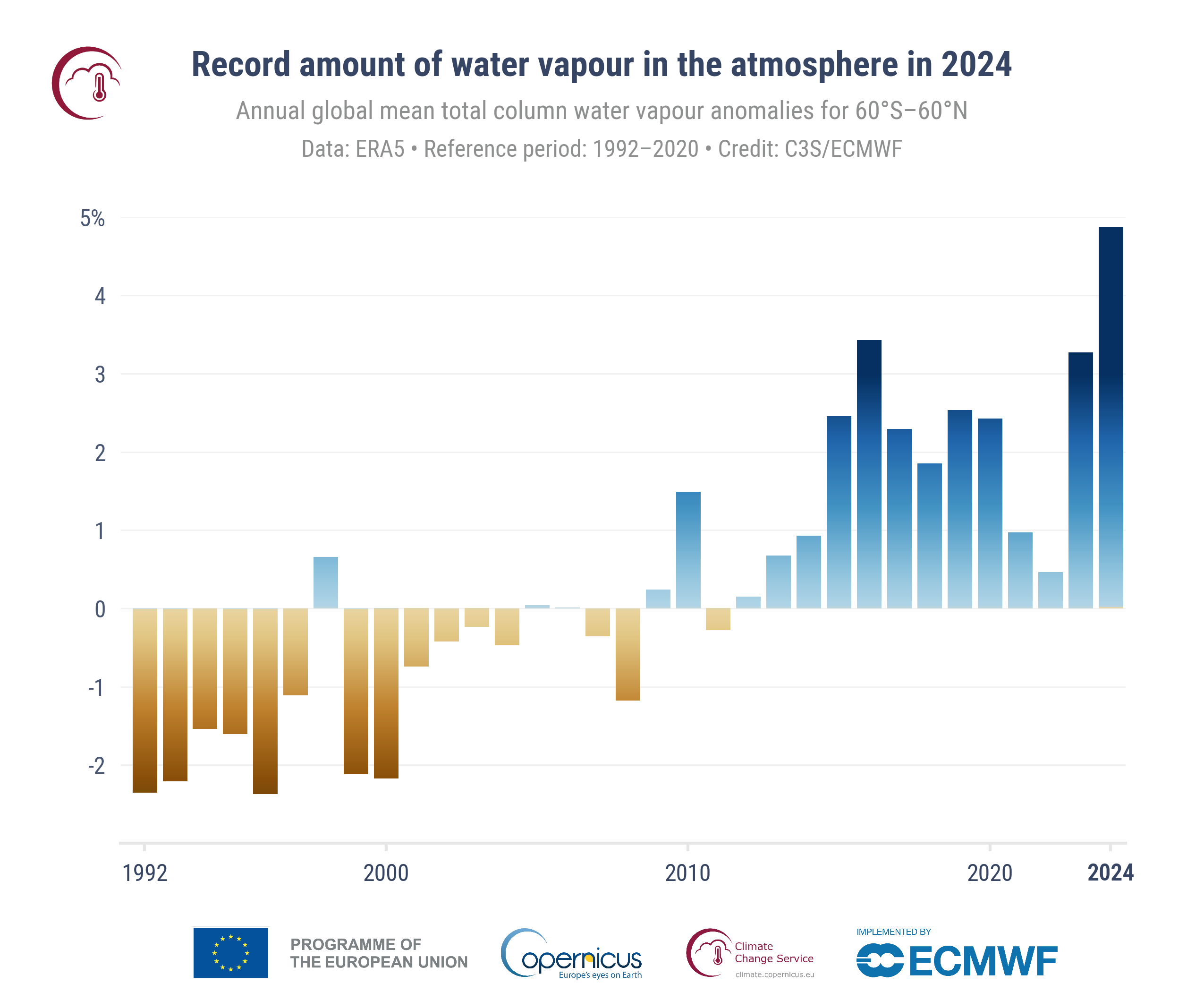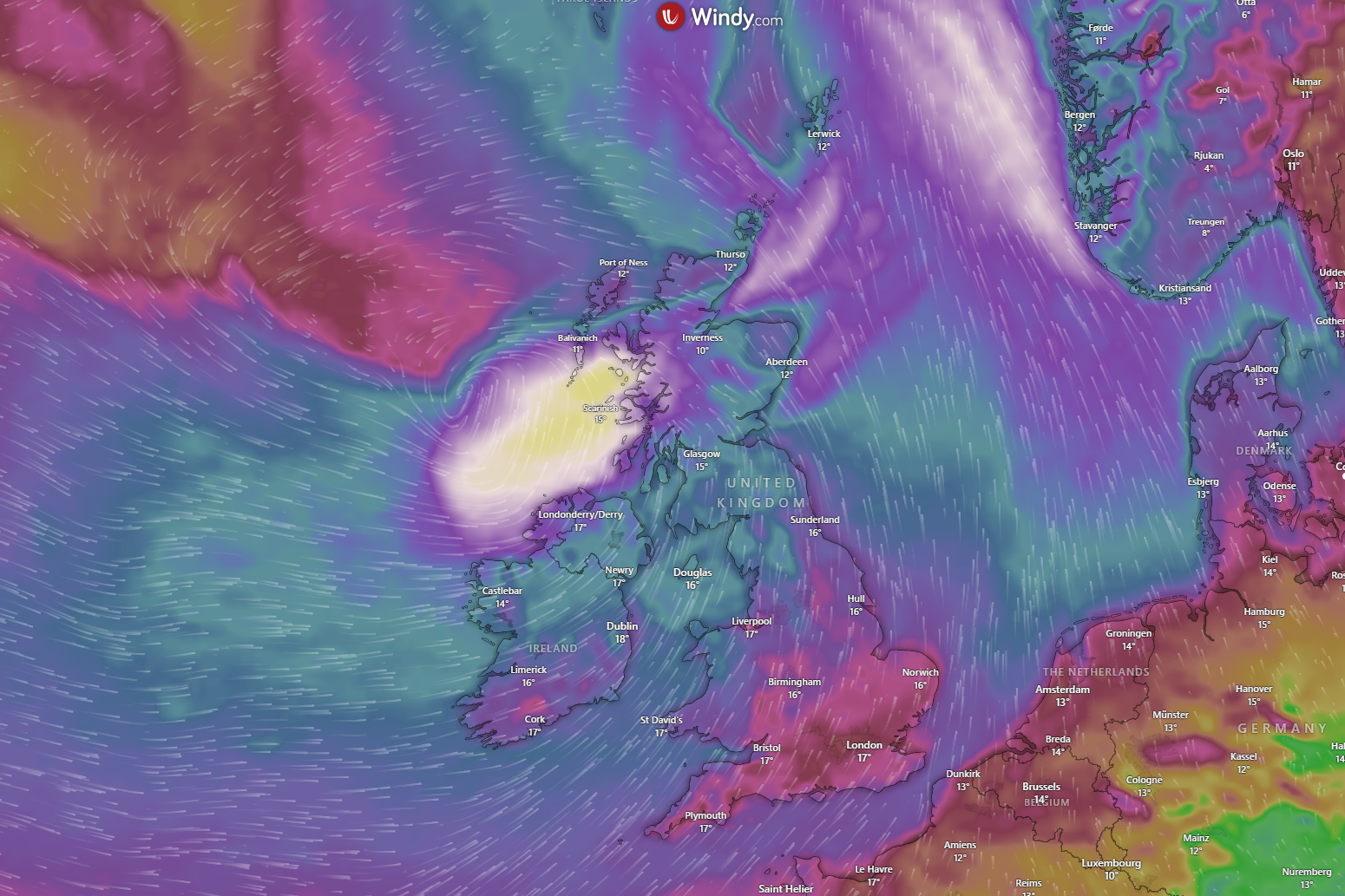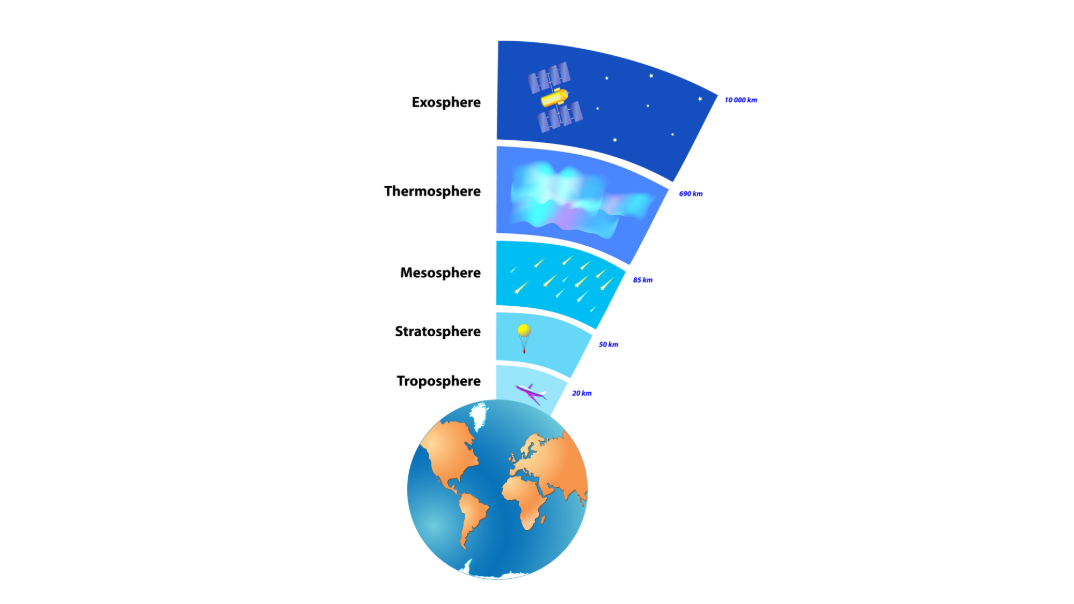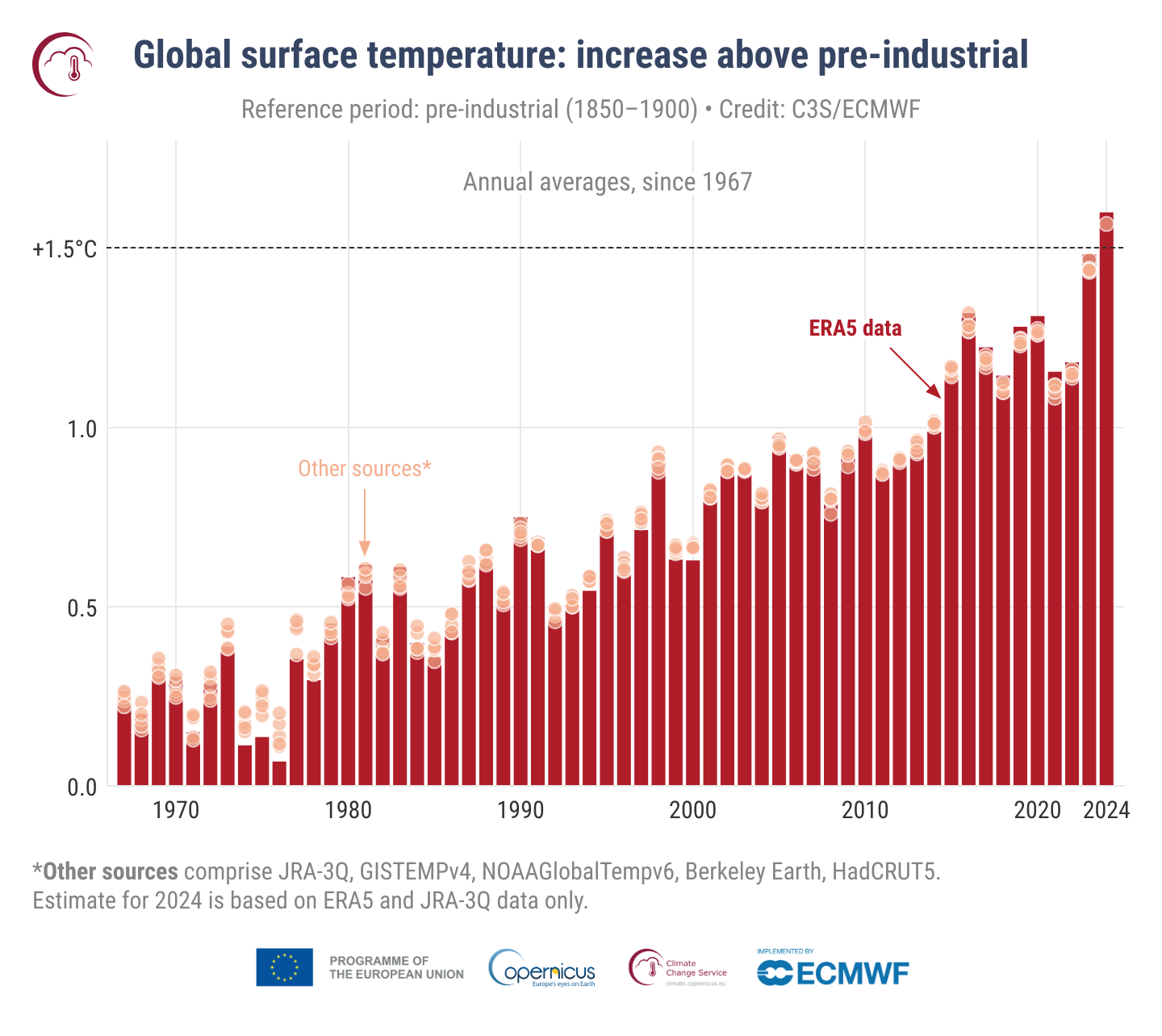

World exceeds 1.5°C threshold for entire year for the first time
by Kirsty McCabe, FRMetS
2024 was the hottest year ever recorded on Earth and the first calendar year to exceed the 1.5°C warming threshold. In fact, the global average temperature during 2024 was 1.6°C above the estimate of the pre-industrial level. A rise of 1.5 or 1.6 degrees might not sound like much, so why is this such a big deal?
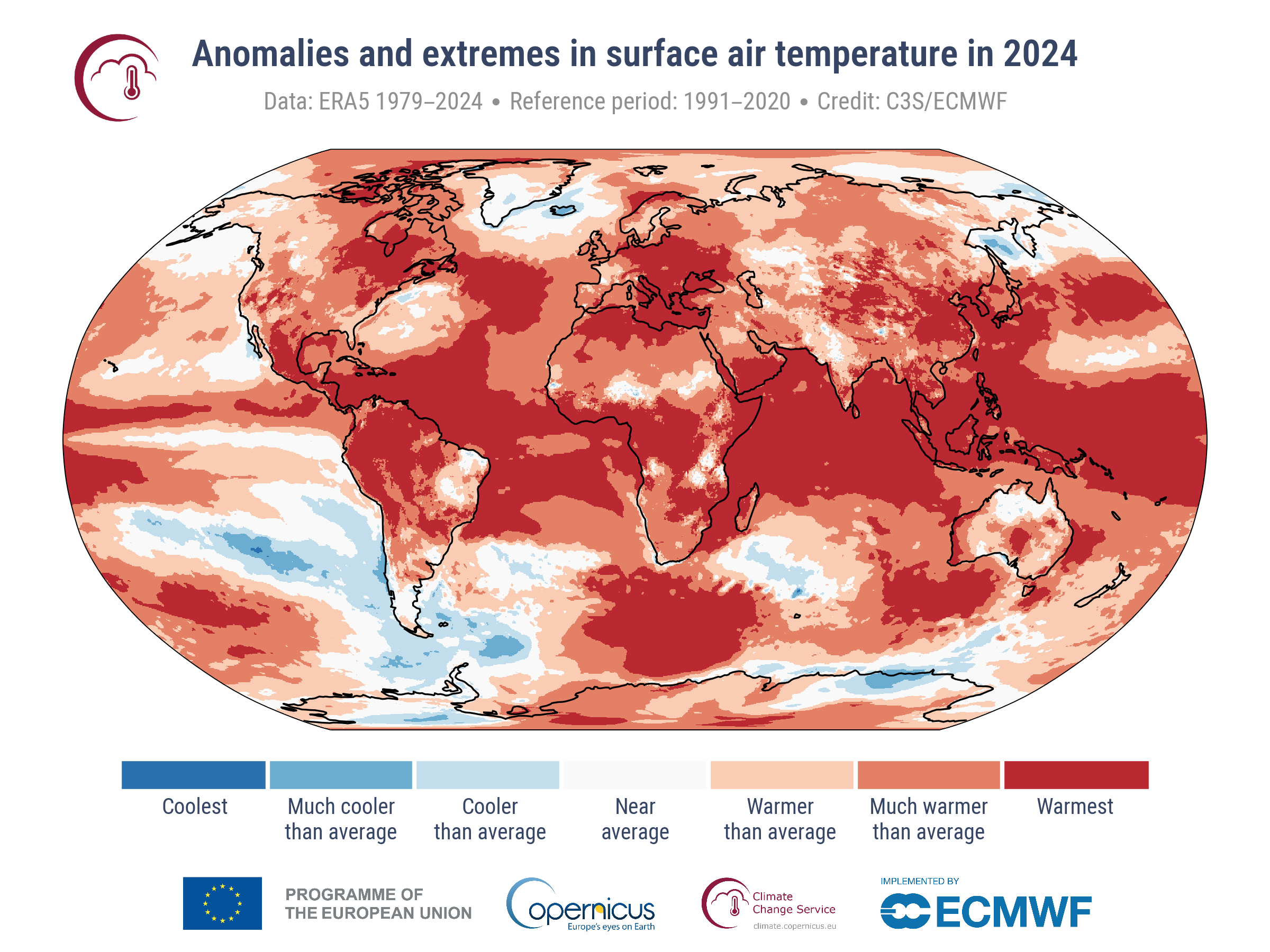
Back in 2015, political leaders from around the world signed the Paris Agreement — a pact to limit global warming to below 2°C above pre-industrial levels. The agreement also set a goal to pursue efforts to limit the temperature increase to 1.5°C, as this is seen as a critical tipping point to avoid catastrophic climate consequences. Long-term goals were also set to limit greenhouse gas emissions from human activity to "net zero" between 2050 and 2100.
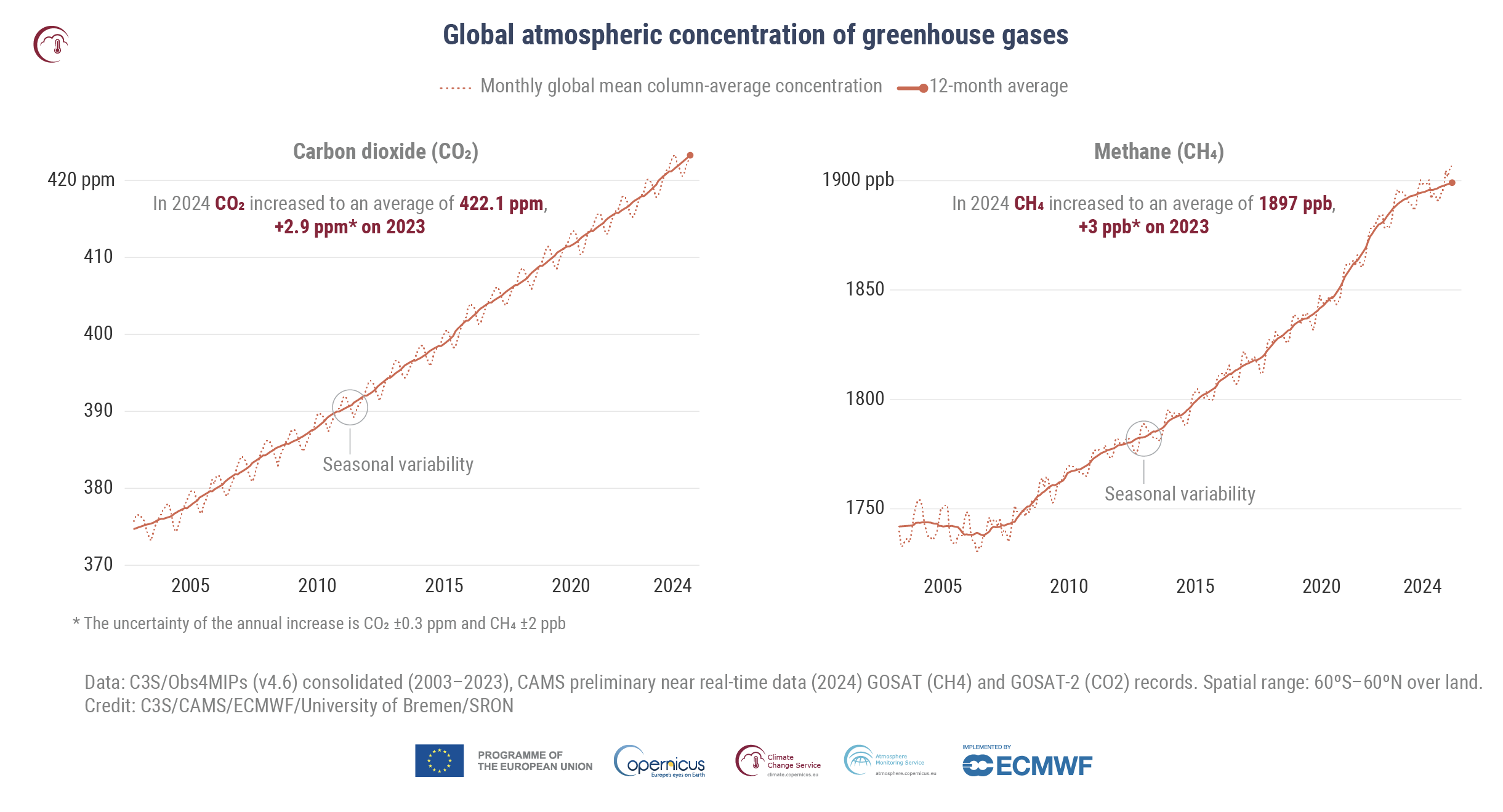
The difference between a rise of 1.5 compared to 2 degrees is significant, as a warmer world intensifies the severity and frequency of extreme weather events, with impacts on sea level rise, heatwaves, polar ice, biodiversity, health, drought, crop yields and ecosystems. Less than a decade from the Paris Agreement we’ve reached that crucial tipping point and are teetering on the edge.
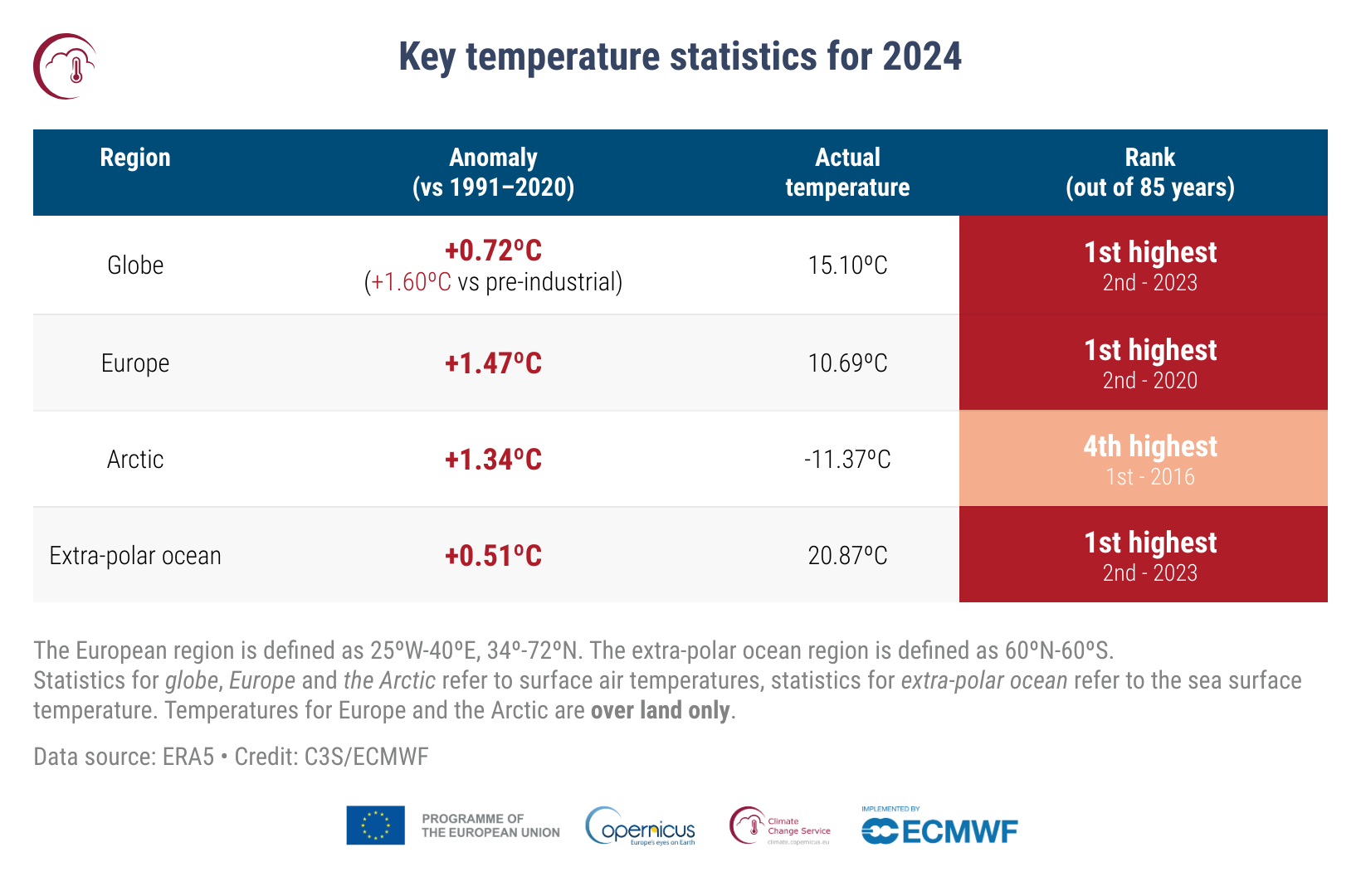
To highlight the significance of 2024’s exceptional warmth, organisations involved in global climate monitoring — the Copernicus Climate Change Service, ECMWF, NASA, NOAA, the Met Office, Berkeley Earth and the World Meteorological Organization — have coordinated the release of their annual temperature data.
And the record temperature data from 2024 has been incorporated into the global climate stripes graphic, which now shows an additional dark red stripe to represent the first time that global average temperatures have gone beyond 1.5°C above pre-industrial levels for an entire calendar year.

© Ed Hawkins, University of Reading
The primary driver of extreme air and sea surface temperatures remains human-induced climate change, although other factors such as the El Niño Southern Oscilliation also contributed to the unusual temperatures observed during 2024.
So what next? Exceeding the 1.5°C threshold does not mean we've breached the Paris Agreement, as this refers to temperature anomalies averaged over at least 20 years. But given the past 10 years (2015-2024) have been the warmest on record, it does raise alarm bells that global temperatures are rising beyond what modern humans have ever experienced. As El Niño wanes, the world should dip back below the 1.5° threshold. How long we stay there is up to us.
Key Messages: 2024 Global Climate Highlights
- 2024 is confirmed as the hottest year on record with a global average temperature of 15.10°C, overtaking 2023, the previous warmest year, by 0.12°C.
- 2024 is 1.60°C above an estimate of the pre-industrial level, making it the first calendar year to exceed the 1.5°C limit.
- Since July 2023, except for July 2024, every month exceeded the 1.5°C threshold. The average for 2023-2024 is 1.54°C.
- The past 10 years (2015–2024) were the 10 warmest on record.
- 2024 was the warmest year for all continents, except Antarctica and Australasia.
- 2024 was the warmest year on record for Europe, with an average temperature of 10.69°C, 1.47°C above the average for the 1991-2020 reference period, and 0.28°C warmer than the previous record set in 2020.
- A new record high for daily global average temperature was reached on 22 July 2024, at 17.16°C, according to ERA5.
- 2024 saw the highest extra-polar annual average sea surface temperature (SST) with 20.87°C, 0.28°C warmer than the previous record set in 2020 and 0.51°C above the 1991–2020 average.
- Antarctic sea ice extent reached record or near-record low values for a second year in a row. From June to October, the monthly extent ranked second lowest behind 2023 and lowest in November.
- In 2024, greenhouse gases saw their highest annual levels ever recorded in the atmosphere. Carbon dioxide column-averaged concentrations reached 422 ppm, 2.9 ppm higher than in 2023, and methane reached 1897 ppb, 4 ppb higher than 2023.
- 2024 was the year with the highest atmospheric water vapour content on record. As atmospheric water vapour levels increase, heavy rainfall events will become more intense.
